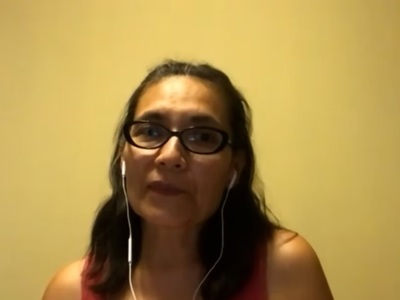Nora

See full story
Nora’s first symptoms were a tingling that began in her feet and traveled up to her knees and later persistent numbness up to her hips. A doctor at an urgent care minimized her concerns, so Nora followed up with her primary care doctor. Eventually, she was referred for a brain and thoracic MRI. Nora’s doctor explained that the MRI showed lesions and diagnosed Nora with MS at 48 years old.
After her neurologist advised against a clinical trial with a different medication, he asked Nora if she would be interested in a clinical trial that aimed to test the method of delivery of Rebif. As Nora was using the Rebidose pen, she agreed to be in the research study. In the clinical trial, Nora used the pre-filled syringes and applicator for the first month and the Rebidose pen for the second month. Before and after each month, Nora completed a questionnaire that asked questions regarding skin irritation, the success of the applicator, etc. At the end of the study, Nora noticed that the applicator on the pre-filled syringes was softer. Though she hated touching the syringes, she found that it was much softer on her skin since the pen would cause a round or purple mark if she moved the needle. After the trial, Nora changed her method of injection to the pre-filled syringes.
Nora is currently participating in another observational study where she answers questionnaires in relation to fatigue and COVID. Nora is also involved in a clinical trial that uses virtual hypnosis. While Nora hoped that the hypnosis would help with her fatigue, she did not get hypnotized because she was put into the control condition. She is also involved in another study that investigates genetics and inflammation among people with MS. Nora is curious to see the results of her saliva-based genetic test. She especially wants to know the risk of her daughter getting MS.
The medication trial was beneficial for Nora because not only did she receive two months of medicine, but she was also able to make a real, informed decision of which applicator was better for her. Now that Nora is retired, she is motivated to volunteer as a self-described “living MS guinea pig” for clinical trials. She hopes to provide researchers with as much information as possible so that they can help the next person and/or provide a cure, or at least find out what causes it.
